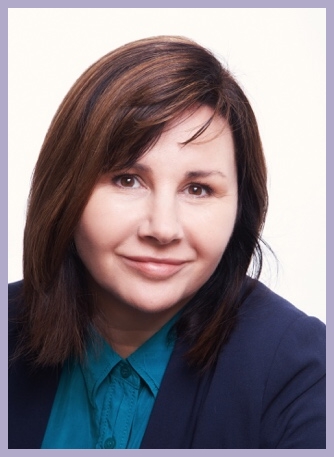 by Jane Green BSc. (HONS) Psych., PGCE, Av.Dip. Ed. Child Development, MA Ed. (Leadership and Management / autism)
by Jane Green BSc. (HONS) Psych., PGCE, Av.Dip. Ed. Child Development, MA Ed. (Leadership and Management / autism)
Why did I stop working in my professional career?
Two-and-a-half years ago I medically retired. This was after years of pain following full dislocations; half-dislocations; sprains; tears in joints, muscles, ligaments and tendons; and arthritis. I received my diagnosis of Ehlers-Danlos syndrome 3 (now hEDS) and associated conditions later that year.
As a child, I did have a few problems with joints and did ‘party tricks’. Whilst bringing up my sons, one with significant medical and neurodevelopmental difficulties, I was passionate about improving autism practice. The OU offered me opportunities without my needing previous qualifications. I won two awards. I had two knee operations in 2003 but was not offered any physio afterwards. It took me nearly a year before I could walk unsupported. In 2006 I was shortlisted for the EP doctorate and offered a place. Unfortunately my knees were unstable and deconditioned, so it made commuting to London impossible. My career then comprised of schools: I was special needs teacher at Young Epilepsy, Advisory teacher for the Local Authority, Lead Educationalist/consultant for the National Autistic Society and Autism Education Trust, Strategic Assistant Head teacher and DfE Autism Education Trust trainer for Ambitious about Autism.
Often, as key speaker at conferences, I would approach the rostrum wearing a microphone and all you could hear were bones crackling, snapping and occasionally popping. There would be a stunned silence. At first I tried to ignore this, but with experience I learned to announce the additional noises to the audience. Speaking at MDT meetings I had time to talk to smaller groups on their tables. I soon came to recognise the look on the face of some delegates (disbelief- face), knowing then to check if my arms or legs were out of place and adjust them, whilst asking the delegates if they were occupational therapists/physiotherapists – which they undoubtedly were! As I was the key speaker holding conferences together it put a great responsibility on my shoulders (excuse the pun) just to be there. So I continued, despite multiple injuries, increasing inflammation and pain.
Throughout my career I tried to stay working. EDS is a variable condition, but without management it became unmanageable. I received drugs for inflammation and referrals to MSK departments. By then I received a diagnosis of hypermobility and discharged. Unfortunately, it took five months to be seen by MSK after the initial event (which was a dislocated ankle with several other injuries).
This delay meant:
- I was not believed
- I couldn’t remember all the facts or what it looked like five months before
- the amount of time escalated other injuries
I was then told categorically “we all have aches and pains at [my] age”. This brought about a defence mechanism in me: I knew that medical resources didn’t know what to do with me. When my shoulder dislocated with tendon tears, I continued working with an increasingly painful but useless shoulder and arm. All this time, I was also a carer. My GP said there was a pain management course. However, the advice given was impossible for me. When I asked what to do as I was hypermobile, I was told ‘this isn’t a course for you’.
I had often limped and used a walking stick at work. Once, over a period of two days, an older injury to ankle ligaments resurfaced in my other foot, so I swapped the walking stick to support that leg. Comments made to me in the office were:
“Oops, did you forget you were limping on the other leg last time?”
and “My son dislocated his shoulder but it popped back in and he just got on with it.”
I found it difficult to explain to them how much pain I was in because I didn’t understand it myself. There a was no pathway and to some extent I thought that maybe everyone suffered like me.
The hot-desking policy at work caused me stress so I asked for a set desk, a chair with arms, a foot pedestal and drawer of files placed nearby. After a health assessment I was given a set place for ‘reasonable needs’. This meant me getting on the floor to dig out my foot rest, finding a chair that moved multi-directionally with hand rests, and a subsequent hunt for suitable drawers after my two-and-a-half hour commute.
 I get a lot of muscle spasms which are agony. I tried to use the quiet room to stretch but it was never available. I was sent to my organisation’s physiotherapist, usually used for students and staff. The physiotherapist tried, but I recognise the face of confusion and disbelief quickly now. I was told to go elsewhere. My last injury meant that I could not sit down for over a year.
I get a lot of muscle spasms which are agony. I tried to use the quiet room to stretch but it was never available. I was sent to my organisation’s physiotherapist, usually used for students and staff. The physiotherapist tried, but I recognise the face of confusion and disbelief quickly now. I was told to go elsewhere. My last injury meant that I could not sit down for over a year.
As EDS UK Support volunteer Area Coordinator for Surrey/Sussex, I was asked to attend the Crawley ARMA event and NHS England conference as patient speaker. EDS UK Support is proud to be a member of ARMA. As a small charity, membership is a great way of keeping up-to-date with changes in government policy that affects our community and it gives us a voice as part of an alliance when EDS doesn’t have the resources to do that type of work directly.

